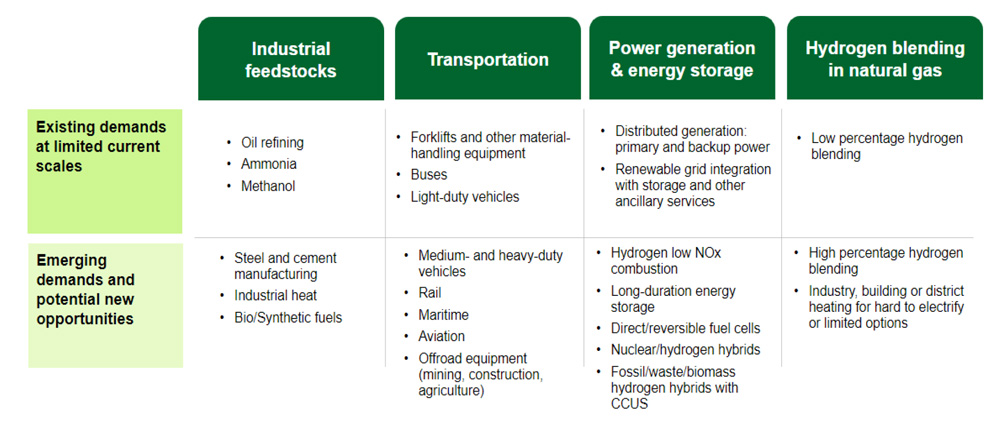The New York Power Authority on Friday reported success in a hydrogen-natural gas hybrid demonstration project at a 45-MW power plant it operates on Long Island.
NYPA said the Brentwood Small Clean Power Plant maintained full operational status while decreasing carbon emissions during the test.
The project was a collaboration with EPRI, General Electric and Airgas, among others, and was the first utility-scale hydrogen-blending project in New York, NYPA said.
The plant’s GE LM-6000 turbine was tested with fuel mixtures of 5% to 44% hydrogen from the fall of 2021 through spring 2022.
At steady state conditions, the exhaust stack ammonia, carbon monoxide and nitrogen oxide slip levels showed that emissions could be maintained below the state Department of Environmental Conservation Title V Regulatory Permit limits using the existing post-combustion emissions reduction systems, NYPA said.
Carbon dioxide emissions decreased as the hydrogen percentage increased, the test found. At 35% hydrogen by volume, CO2 output was down by about 14%.
Carbon monoxide decreased by as much as 88% as the hydrogen mixture increased, apparently due to greater oxidation in the presence of hydroxyl radicals resulting from hydrogen combustion.
However, NOx increased by as much as 24% as the hydrogen content was increased, unless the water injection rate also was increased. This performance is specific to the technology of the LM-6000 and may not apply to dry-low emissions combustors, authors of a report on the test said.
Engine control was stable throughout the duration of the test. Combustion equipment was in good condition before, during and after the test; periodic borescope inspections found no apparent damage to the turbine due to hydrogen combustion.
Takeaway lessons from the tests included:
- Maintain a stable hydrogen supply so the hydrogen system does not trip off; the manual hydrogen regulators at Brentwood required continuous monitoring and adjustment, which would not be practical in normal plant operations.
- Ensure adequate natural gas supply pressure, which must increase as the hydrogen ratio increases. This proved to be a limiting factor on the percentage of hydrogen used in the test.
- Allow sufficient time for concept review and permit exceptions. Hydrogen is not well-defined in National Fire Protection Association codes and standards, and securing permits needed to operate the Brentwood plant in an experimental mode took an extended time.
- Adopt a collaborative design approach earlier on in the process. The large number of teams involved in the Brentwood project progressed with their work at different speeds, requiring rework to be done late in the process.
Many partners joined for the NYPA project:
- GE assisted in building the hydrogen/natural gas blending system.
- EPRI’s Low-Carbon Resources Initiative helped design the project and served as advisors on the technical evaluation.
- Airgas supplied the renewable hydrogen for the testing.
- Sargent & Lundy, the original architect engineer of the Brentwood plant, provided engineering expertise as well as safety reviews.
- Fresh Meadow Power developed the piping system that delivered the hydrogen to the GE-designed mixing skid and into the turbine.
NYPA interim CEO Justin E. Driscoll said in a news release that this type of collaborative, multi-pronged approach is what is needed to advance the technology New York will rely on to meet its ambitious climate-protection goals: 70% renewable energy generation by 2030, 100% renewable by 2040 and an 85% reduction in greenhouse gas emissions in 2050 compared with 1990 levels.
Not all the technology needed to accomplish this exists in scalable or economically viable form. Green hydrogen — hydrogen generated through zero-emissions means — is just one of what will likely be many components of the strategy to reach the decarbonization goals set by New York and other governments.
“Today, NYPA is pleased to share the results of our hydrogen study with the industry and the public so that our key learnings can help illuminate future decarbonization efforts,” Driscoll said.
Eric Gray, CEO of GE Gas Power, said: “Efforts like the Green Hydrogen Demonstration Project are vital to validate the important role that hydrogen can play in lowering carbon emissions from power generation while also providing reliable and affordable power.”
The report on the demonstration project is offered for sale by EPRI here. The executive summary is available for free download here.



